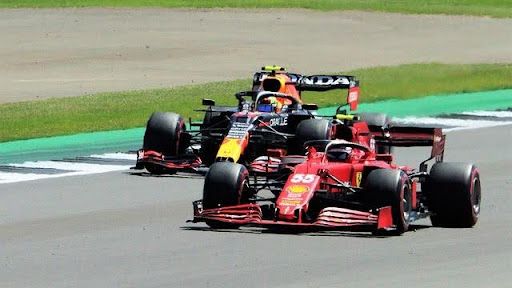These formula 1 cars changed the game forever
 Formula 1 is regarded as the absolute pinnacle of motorsport. It combines the extraordinary skills of drivers, who are subjected to a barrage of physical and psychological demands that test their strength, with the most advanced vehicles on the road today, which allow for higher speeds, excellent fuel efficiency, and robust construction. Each team is focused on the same objective: going faster. They invest heavily in R&D to build the world’s fastest wheels. Decades ago, F1 cars were roughly 4.5 m in length and 1.8 m wide, but they quickly evolved into more aerodynamic machines to improve track times. Every ride is now 2 meters wide, and most are north of 5.5 m in length.
Formula 1 is regarded as the absolute pinnacle of motorsport. It combines the extraordinary skills of drivers, who are subjected to a barrage of physical and psychological demands that test their strength, with the most advanced vehicles on the road today, which allow for higher speeds, excellent fuel efficiency, and robust construction. Each team is focused on the same objective: going faster. They invest heavily in R&D to build the world’s fastest wheels. Decades ago, F1 cars were roughly 4.5 m in length and 1.8 m wide, but they quickly evolved into more aerodynamic machines to improve track times. Every ride is now 2 meters wide, and most are north of 5.5 m in length.
Racing is a technological testing lab for automakers. A lot has changed since the 1933 Monaco Grand Prix in the sense that speed has evolved spectacularly – over 360 km/h. Improvements in tire design and lighter and stronger bodywork have made the vehicles all the more faster. In 2025, the Fédération Internationale de l’Automobile (FIA) will introduce a new breed of power unit into Formula 1 – the second-generation hybrid power unit – that will be carbon-neutral and powered by advanced sustainable drop-in fuels. Follow the Formula 1 news to see how your favorite team is doing. The new season is just around the corner, and for the first time in years, Melbourne will be hosting the opening round.
Without further ado, these are Formula 1’s greatest racing machines:
Red Bull RB19
The Red Bull RB19 pushed the boundaries of engineering, redefining what’s possible in one of the world’s premier forms of motorsport. Red Bull RB19 combines a remarkable power unit with an extraordinary aerodynamic package, improving “everywhere” from its predecessor. The front axle line is a bit forward than RB18, which allows the car to travel faster than it can, an advantage in Formula 1 racing. The RB19’s chassis has more of a V-shaped profile that reduces losses along the flank. The V-shaped style can prove to be useful on tight and twisty circuits as the driver can adapt to the different segments of the track.
The RB19 has been compared to some of the most iconic sports cars, such as Mercedes’ W11, Ferrari’s F2002, and McLaren’s MP4/4. It won 21 of the 22 Grand Prix races in 2023, and its success allowed Red Bull to divert more resources to the design of Rb20 in advance. The reigning champion Max Verstappen and Sergio Perez drove the RB19, enduring torrid practice sessions that comfortably secured race wins and pole positions. With Adrian Newey at the design helm, RB20 got an aggressive-looking upgrade with its sidepods and engine cover gulleys. You can see RB21 in the flesh at Formula 1 pre-season testing at the Bahrain International Circuit from February 26-28.
Mclaren MP4/4
In the 1988 Formula 1 World Champions, in the hands of Alain Prost and Ayrton Senna, the MP4/4 won 15 of the 16 races, only failing to conquer the Italian Grand Prix. Ayrton Senna and Jean-Louis Schlesser collided at Monza, preventing McLaren’s clean-sweep. The MP4/4 dominated F1, and many reasons could be raised, including the best drivers of the era, the engine, and the chassis, but success was ultimately due to the performance of the RA168E V6 turbo engine. At their peak, Honda engines were the ticket to Grand Prix glory owing to their power, reliability, sophistication, and winning track record.
Notwithstanding the unfortunate mishap at Monza, the F1 car claimed all but one pole position in the 1988 season. It holds the record for the highest percentage of laps led in a season with 97.3% – Ayrton Senna took 8 victories while Alain Prost had 7. The MP4/4 had no impressive features as far as aerodynamics were concerned, but it had the flexibility to overcome challenges. The vehicle held the record for the highest win rate in a season until 2023 when the record was broken by RB19, powered by a turbocharged hybrid engine. Some still think the MP4/4 is the perfect package, with light overall weight, remarkable downforce, and efficient brakes and suspensions.
Ferrari F2002
Throughout the 2002 Formula 1 season, Michael Schumacher finished in either first or second place in every race, apart from the Malaysian Grand Prix, where he finished third. The Ferrari F2002, driven by the F1 legend, was sold for $6,643,750, making it the second-most expensive motorized vehicle ever sold at an auction. Ferrari won the Constructors’ Championship in 2002, entering a period of complete domination, winning titles three years in a row. The Italian sports car manufacturer was so powerful that it didn’t introduce F2002 until the third race of the season. Lewis Hamilton signed a multi-year deal to race for Ferrari, in case you didn’t know. Thanks to Grandprixnews, you won’t miss a moment.
Alfa Romeo 158/9 Alfetta
The Alfa Romeo 158/9 Alfetta impressed the public with a 1-2 finish upon its debut in 1938 at the Coppa Ciano Junior in Livorno, Italy. It was developed in in 1937, years before Formula 1 officially became effective; the 1946 Turin Grand Prix anticipated F1’s start. In the years before World War II, Alfa Romeo used the car in several competitions, proving to be a dominant performer. Gioacchino Colombo designed the 158 engine for the Alfetta and caught the attention of Enzo Ferarri, who asked him to design a V12 for his marque.
Back in the day, competition was minimal, with automakers having a smaller budget compared to Alfa Romeo. The Alfa Romeo 158/9 Alfetta is much bigger than its name suggests – the car resembles a torpedo, with its powerful 1.5-litre straight-8 engine that ensures exceptional handling. The gearbox was integrated with the differential and mounted on the rear axle for ideal weight distribution. having survived calamity and war, the F1 car won 6 Grand Prix in the 1950 FIA World Championship of Drivers, but missed out on the Indianapolis 500 since no European team attended the American race that year.
Wrapping It Up
No sport is as challenging as Formula 1. The driver is only half the athlete -the vehicle is the other half. Presented as an evolution, the FIA regulations will no doubt impact the look.
The post These formula 1 cars changed the game forever appeared first on Gauge Magazine.



